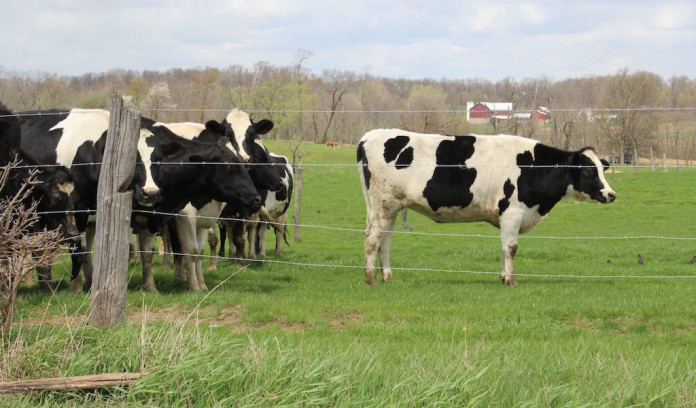This past winter has been the worst I can remember on my farm for damage to the fields from livestock and equipment.
Fortunately, in the April 5 All About Grazing column, Rory Lewandowski, Wayne County Extension agriculture educator had an informative article on mud control, planning, the effects and great potential solution.
Today, I want to compliment that article by discussing ways to repair the problems from the damage and maybe some more solutions to reduce mud issues with livestock.
For the past two weeks, I have been going around the farm trying to fix up areas that were damaged from feeding hay and other activities in fields over the winter.
The slow spring has only made the problem worse. What are some tips to get things repaired?
First, it is important to get the ground “smoothed” out and reseeded as soon as the weather permits which will prevent additional erosion.
I have been going around with the front end loader and back blade smoothing up the ground where I have been driving equipment in fields.
Seeding
One tip I have learned over the years is to seed immediately after “back blading” when there is some loose soil on top.
If you can spread out seed on the ground with some fertilizer before a rain or an overnight dew, chances of germination are greatly improved because of better seed to soil contact prior to the ground crusting.
In addition, a little mulch such as straw or even some hay (I usually use hay chaff from the floors of hay mows) will improve germination chances as well.
There are options for the grass seed you may use. In areas with heavy traffic, you can use Kentucky 31 endophyte-infected fescue seed which is readily available. This can provide a thick sod that can withstand a lot of abuse.
This comes with a caveat: this grass can cause potential problems with livestock. The ideal option would be to plant a “novel” endophyte fescue which is an aggressive grass like Kentucky 31 endophyte-infected fescue, but without the potential adverse livestock affects.
It may be a little harder to find, but I think that this is the best option.
Other grasses are better than nothing, but may not hold up as well.
Assess damage
In damaged areas, especially around gates where there is concentrated equipment and livestock traffic, utilizing geotextile fabric and stone, as described in Lewandowski’s April 5 column, works well.
In fields where round bales were fed and there is damage and hay residue, there are a couple possibilities, but use your judgment based on how bad the damage is and what your plans are for the fields for this year.
If damage is not bad and there is areas of minimal hay residue and one does not need that area in production, doing nothing could be an option. In many cases, by next year, the field will be fine.
If damage was worse, some tillage and reseeding may be needed. This can vary from a light harrowing to major tillage. Should you use annual or perennial grasses? Some may prefer to use annual grass seed.
The advantage to this is the rapid germination and growth. The disadvantage is that it will die in the fall. I prefer a perennial grass, but consider the potential traffic in the area, if you will feed in the same place next winter and livestock needs.
If there will be a lot of traffic in the same place next year, Kentucky 31 infected fescue or a novel endophyte fescue will be a good option. If it is going back to pasture or a hay field, pick grasses and legumes accordingly.
Resources
The Ohio Agronomy Guide provides an extensive list of options for pastures and hay fields, and how to select and determine seeding rates for mixtures.
When selecting each type of forage, I am a firm believer in paying a little extra for improved varieties. The advancements in insect and disease resistance, persistence, and quality will be well worth the investment.
Finally, match the forages selected to your animal needs. For example, my beef cows probably do not need high-quality alfalfa.
When seeding, make sure the ground is worked up with some loose soil, yet a good firm seedbed, then try to make sure there is good seed to soil contact.
Some will lightly disc, harrow, or use a drag after spreading seed. My favorite tool is a cultipacker to help with seed to soil contact.
For many of us, this was a tough winter for livestock and our fields, even the best-managed operations had issues.
We have a chance to repair areas which were damaged, now with improving weather.
Let’s hope for a great grazing and hay season.













